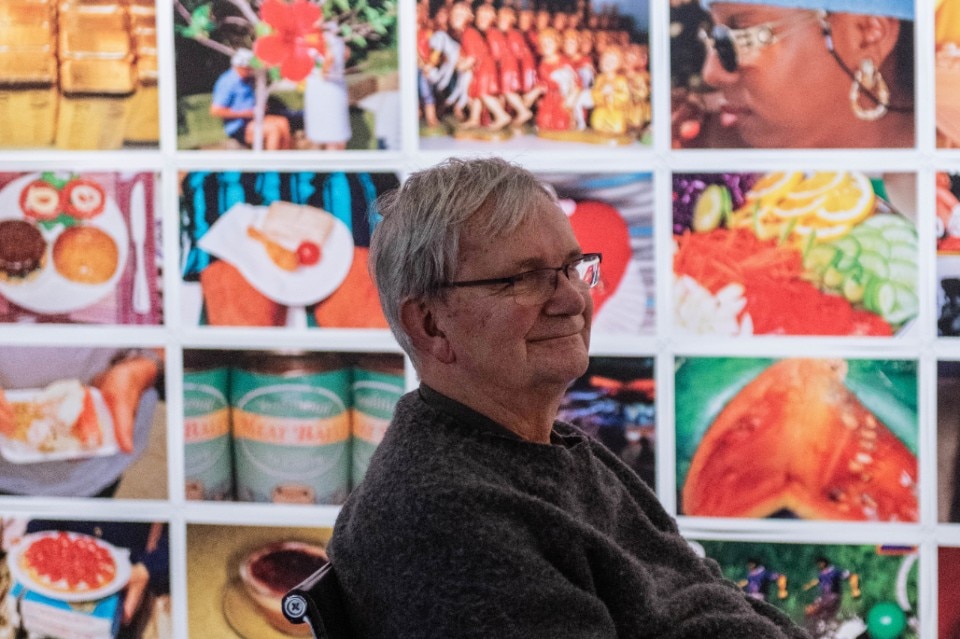Martin Parr (1952–2025) has been one of the most influential and original documentary photographers of our time. With an ironic and incisive eye, Parr captured everyday life and the contradictions of Western society with honesty and sensitivity. Just a few months ago, he personally curated the large solo exhibition Martin Parr. Short & Sweet at MUDEC in Milan — a journey through decades of photography used as a mirror of the world. His vision on social classes, consumerism, and British holiday culture will live on in his images — and in the memory of those who admired them.
Since its inception in the 19th century, social documentary photography has served the purpose of conveying to a wider audience what was distant – in a geographical or metaphorical sense – and therefore unknown and invisible. Often delving into complex events, it seeks to produce a powerful impact, navigating between the extremes of tragedy and grandeur.
Martin Parr's work belongs to the field of documentary photography but is marked by an originality that transcends the conventions of the genre. His unparalleled talent for capturing the idiosyncrasies of everyday life has made him one of the most revered contemporary photographers, with an unmistakable aesthetic and compositional tendency that has become paradigmatic of modern visual culture.
Most of the time, people are looking for a form of reality that is perfect. That doesn’t exist of course. So I come along with my camera and I can show people the flaws that we all know we have.
Martin Parr
The choice of middle-class everyday life as the focal point of his photographs, particularly in relation to leisure time – which, according to Parr, is the only time when people are truly free to choose what to do and express their free will – is key to the anthropological work that is present in each of the British photographer's images.
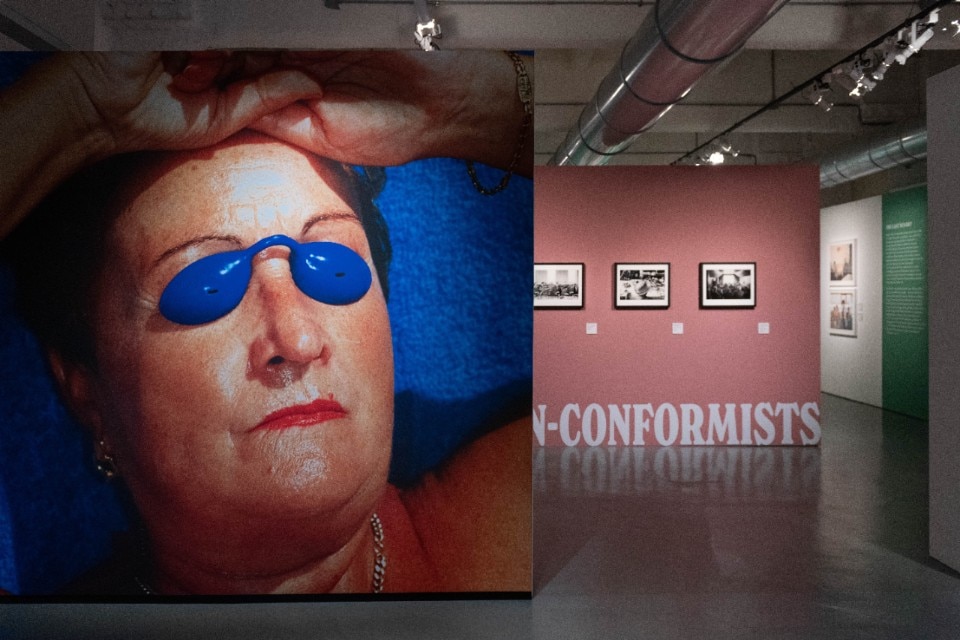
Martin Parr has been documenting society for forty years, focusing on changes in popular culture as they occur, anticipating others, and expressing his observations in a language – that of documentary photography – that is both familiar and unsettling, and that inevitably places the viewer in front of a mirror.
Unmistakable British Humor and the First Color Series The Last Resort
Born in 1952 in Epsom, a middle-class town south of London, Martin Parr inherited two elements from his family that have been fundamental to his career: a passion for photography from his grandfather, who lived in Yorkshire and whom Parr visited every summer as a child; and an obsession with detail and quiet anticipation that leads to perfection from his father, a die-hard birdwatcher. The first photograph Parr took was of his father near a frozen stream near the family home. From the first camera he received as a gift to his decision to study photography at Manchester Polytechnic, little time passed and photography soon became a means of establishing a relationship with the world around him, of understanding its changes and characteristics.
If you photograph for a long time, you get to understand such things as body language. I often do not look at the people I photograph, especially afterwards. Also when I want a photo, I become somewhat fearless, and this helps a lot. There will always be someone who objects to being photographed, and when this happens you move on.
Martin Parr
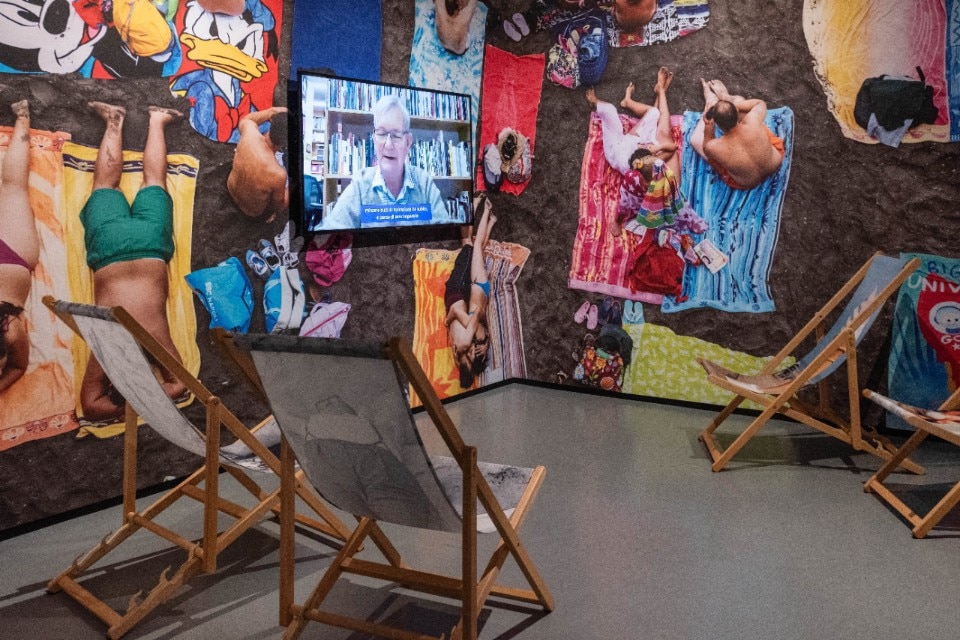
It is no coincidence, then, that Martin Parr's favorite subject, especially in his early years, was the English population and its idiosyncrasies. One of his earliest series, The Non-Conformists (1975-1980), revolves entirely around the sense of community that Parr identifies within groups of Nonconformist Protestants (a creed to which his family had adhered). Shot in black and white, this reportage, like another from the same period entitled Bad Weather, immediately brings to the fore the ironic but never judgmental eye of the British photographer, who had his first real breakthrough in 1982 with the beginning of the series The Last Resort.
The shift to color photography, characterized by the saturated hues that would become emblematic of Parr's style, was also influenced by the recognition given by American museums since the mid-1970s to color photographers such as William Eggleston, Joel Meyerowitz, and Stephen Shore. Using a medium-format camera, Parr captured the beaches of New Brighton, where Liverpool's working-class families spent their leisure time. The contrast between the neglect of the place, the vignettes of family life, and the context of leisure creates a short-circuit that evokes in the viewer a mixture of irony, cruelty, tenderness, and empathy – feelings that are also reflected in the photographer's gaze. Through this series, arguably Parr's most expansive body of work, he narrates the dawn of a new era dominated by mass consumerism.
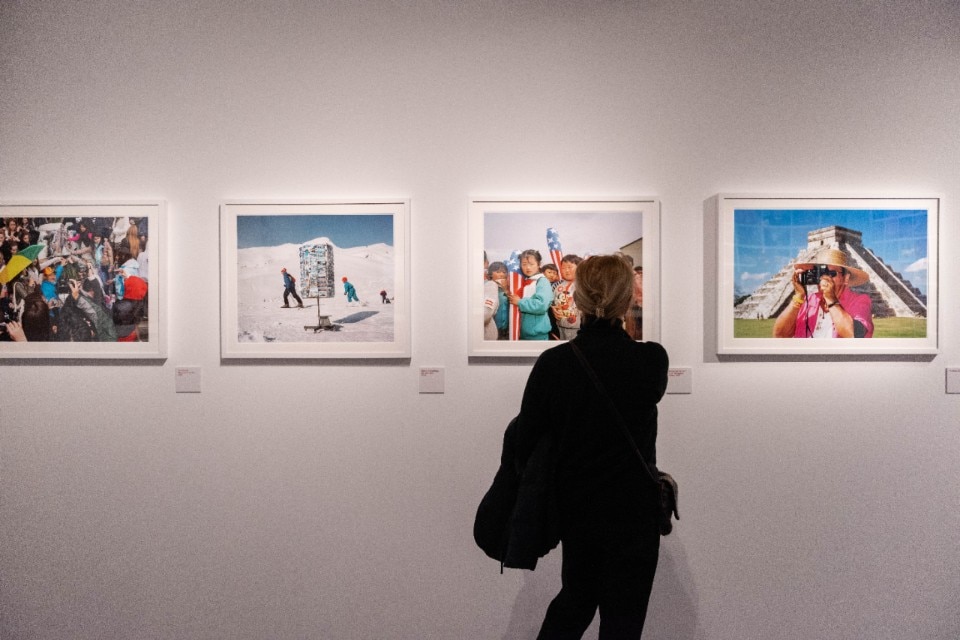
The 1980s, Thatcherism and Memetic Realism
If Martin Parr was criticized for his photographs in the series The Last Resort, exhibited at the Serpentine Gallery in London, due to perceptions of belonging to a social class economically superior to that of his subjects, he turned his lens on the British middle class in the mid-1980s with The Cost of Living (1987-1989). This series presents a stark and unflinching portrait of what he called the “comfortable classes” at the height of Thatcherism. The Cost of Living was shown at MoMA New York in 1991 as part of the exhibition “British Photography from the Thatcher Years.”
You have to be obsessed if you’re an artist of any type. Really, that’s the only way that it can happen.
Martin Parr
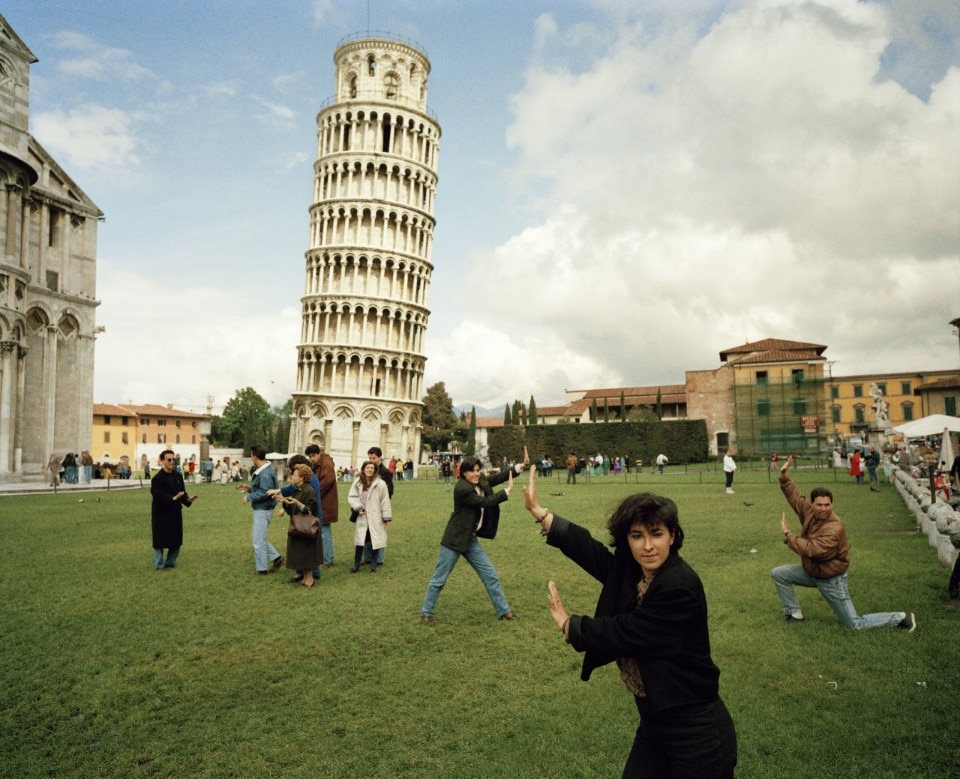
During this period, as England became increasingly insular, Parr's attention turned primarily to events beyond the British Isles. He traveled around the world, from China to India, beginning Small World (1989-2012) in 1989. The series documents the evolution of his fascination with leisure in the burgeoning realm of mass tourism. Parr immortalizes the rituals and clichés of tourists in the world's most visited destinations – gestures repeated ad infinitum by the countless visitors who flock to these places (and it is impossible not to think of the aesthetics of memes) – that tell of the emptying of the meaning of travel through the standardization of tourism.
Parr's subtle irony and frank, brutal, and often grotesque gaze undoubtedly contributed to the controversial reception of his work among photographers associated with the prestigious Magnum agency. While the more conservative members of the committee remained unconvinced of his originality, Parr secured his place in the pantheon of photographers in 1994 with a score of 66.6%, in the same institution he would later preside over from 2013 to 2017.
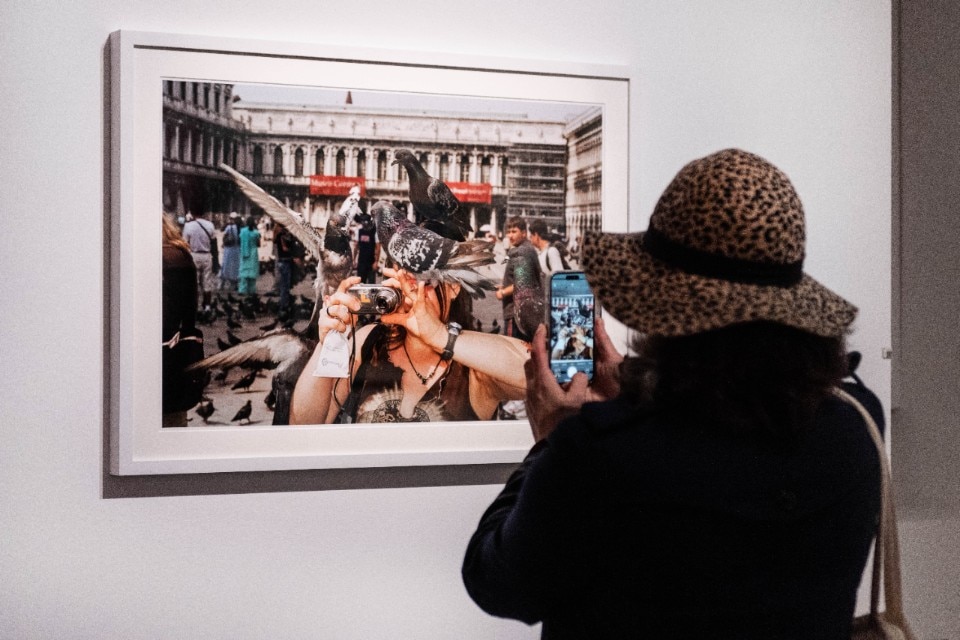
Contemporary Kitsch, the Common Sense of the New Millennium
Martin Parr's series of photographs entitled Common Sense (1990-1999) extends his photographic exploration, begun in the 1970s, into what is considered vulgar in modern society. Contemporary kitsch saturates the senses of the viewer of these images, evoking a queasy feeling akin to indigestion from fast food after a night of drinking. Through the macro lens of his camera, Parr captures, sometimes in extreme close-up, random details of barely recognizable landscapes-food scraps, quirky clothing, personal effects – all in sharp focus, with garish colors against slightly blurred backgrounds. This juxtaposition contributes to the narrative of the absurdity of consumerism and mass waste.
I’m interested in documenting society, noticing its changes as they happen, and also trying to focus my photography on things that will be important in the years to come.
Martin Parr, Short and Sweet, Short and Sweet exhibition's catalogue, 24 Ore Cultura, Milan, 2024
As the new millennium unfolds before Martin Parr's lens, not without a bitter aftertaste, it reveals a treasure trove in which humanity appears unchanged, but the tools at its disposal have evolved. Beaches reappear, this time from all over the world, captured with a telephoto lens in the series Beach Therapy (2019) and Life's a Beach (1986-2018).
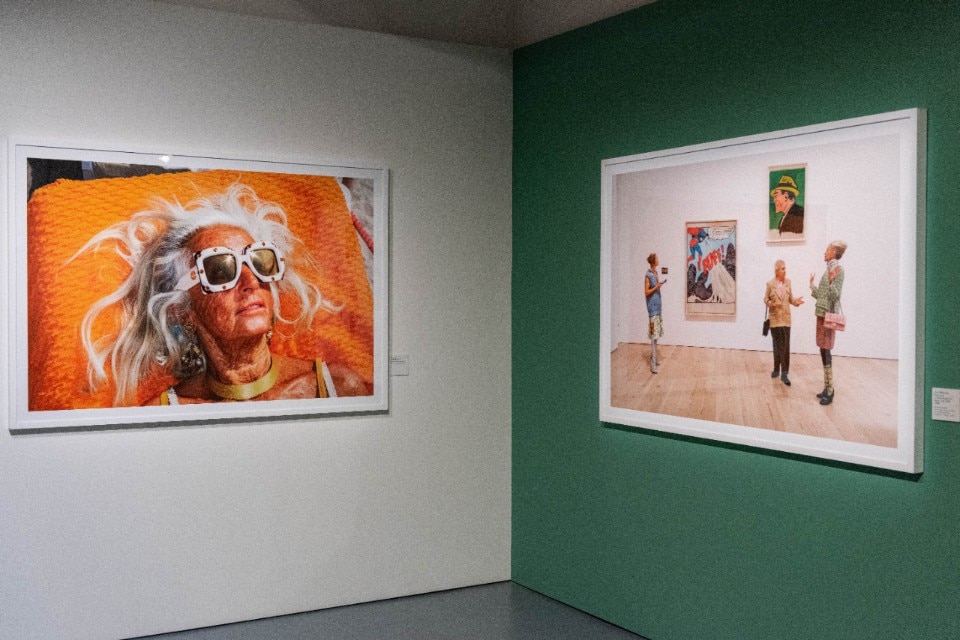
The aura of respectability that surrounds the British elite reappears in Establishment (2010-2016), while new mores emerge due to technological innovations, such as the proliferation of the selfie stick in the series Death by Selfie (2019), where Parr documents the obsession with self-portraits, including a few instances where the pursuit proved fatal due to reckless distractions. Finally, there is no shortage of important fashion collaborations in his career over the decades, from editorials for Vogue to photo campaigns for Gucci.
If you look at the world, what can you do? It’s funny, and if you don’t laugh, you cry, because we all know we’re doomed.
Martin Parr
For Parr, capturing his nation through photography served as an almost therapeutic endeavor – an exploration and understanding of the ambiguity between engagement and detachment inherent in his relationship to England. Perhaps this is where the discomfort of viewing his photographs lies; at first, one may chuckle and create distance, only to be struck by the realization of how easily one could identify oneself as the protagonist in the very same shots.
The Martin Parr Foundation and the Endless Archive of the British Photographer
Martin Parr has dedicated his life not only to photography – publishing more than forty books of photographs and participating in hundreds of exhibitions over the decades in the world's most important institutions and galleries – but also to encouraging the discovery of new British and Irish photographers and artists dedicated to portraying the history and society of these nations. This led to the creation of the Martin Parr Foundation in Bristol, which houses the artist's archive and a library of more than 5,000 volumes, catalogued online. The Foundation organizes exhibitions and events to support the development of British and Irish artists.
Opening image: Martin Parr. Photo Carlotta Coppo
- Exhibition:
- Martin Parr, Short & Sweet
- Location:
- Mudec, Milan, Italy
- Dates:
- from February 10th to June 30th 2024


